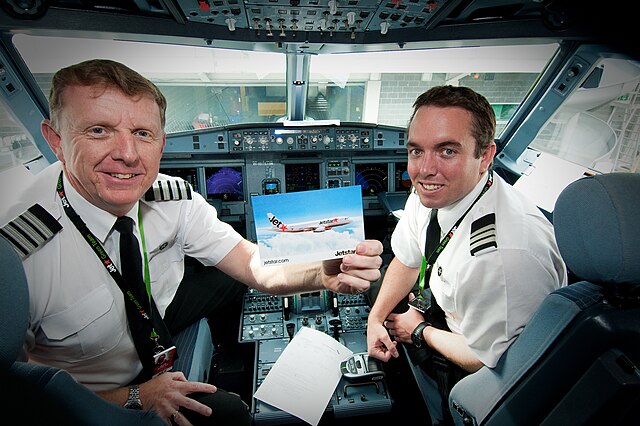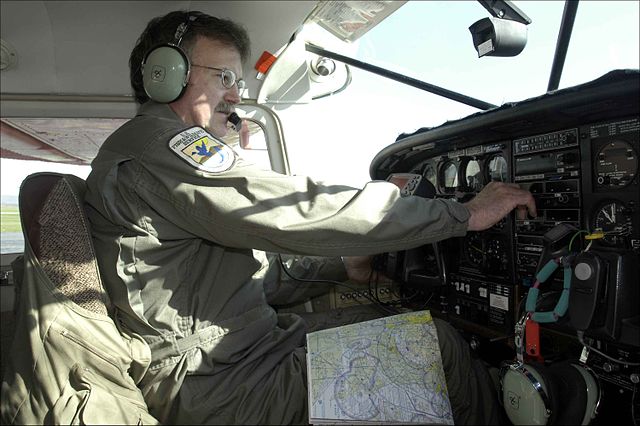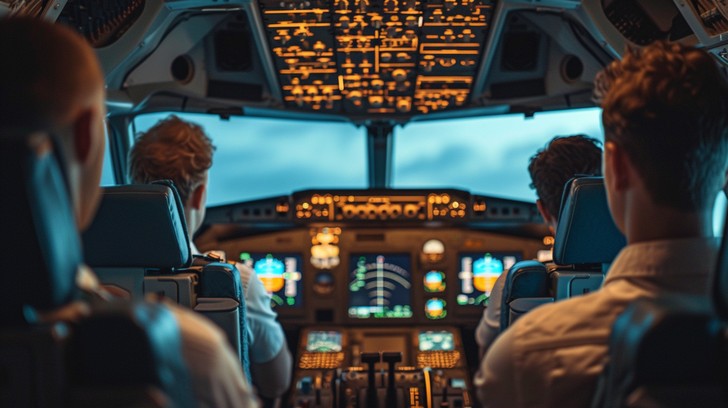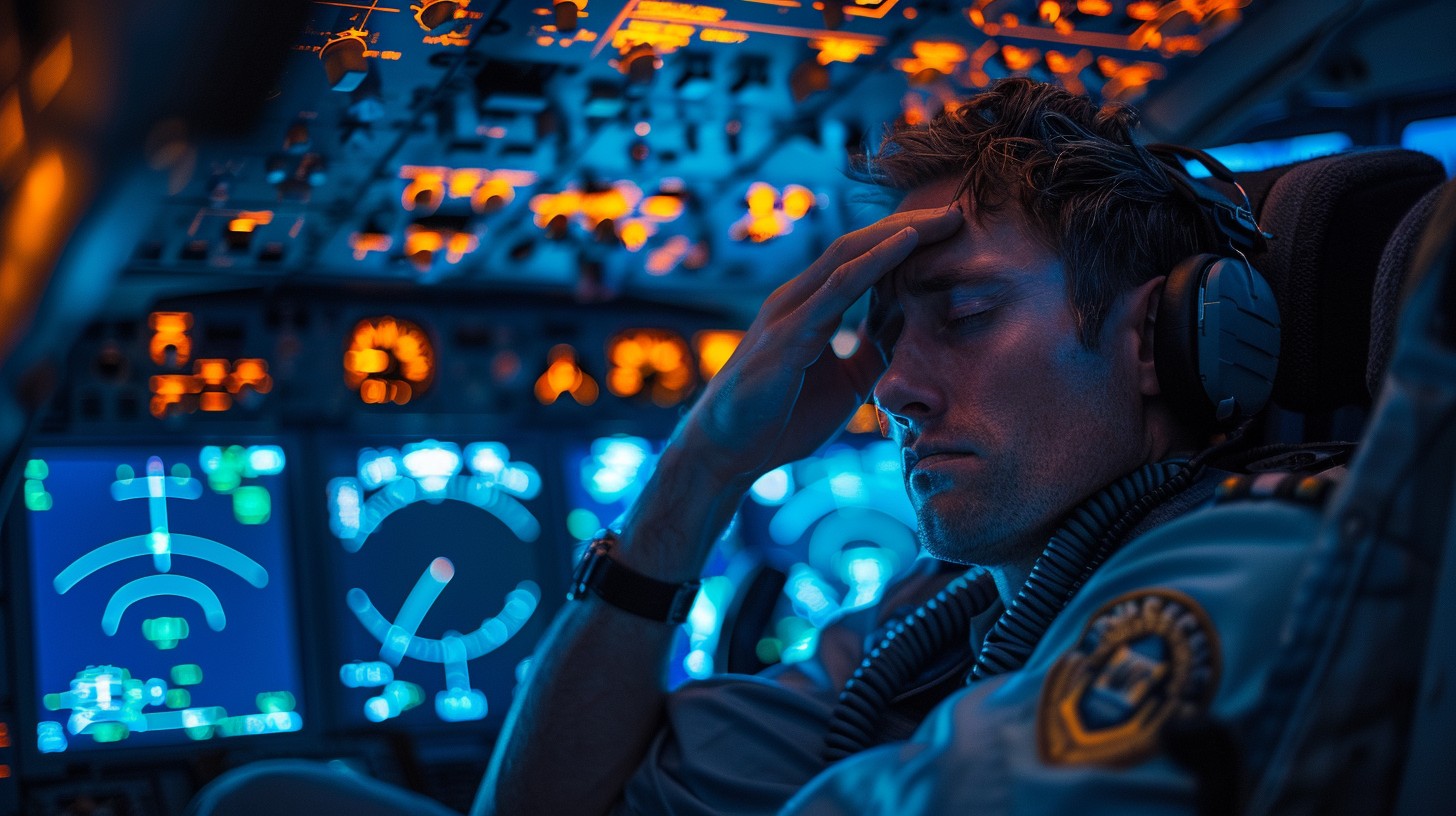Pilots are like the unsung heroes of long-haul flights. They’re the ones who keep us cruising at 30,000 feet while we sip our in-flight coffee and binge-watch movies. But have you ever wondered how they manage to stay sharp and focused during those journeys?

Piloting is a profession where errors aren’t just lost deals but potential disasters. They’re not just flying a plane; they’re responsible for the lives of everyone on board, a duty that can’t be taken lightly. Therefore, proper rest is crucial to prevent pilot fatigue, which can impair mental and physical performance. Regulatory bodies like the European Union Aviation Safety Agency (EASA) and the Federal Aviation Administration (FAA) set strict rules to ensure pilots get adequate rest.
How does a pilot’s sleep schedule affect their performance?
Keeping up with rest is essential for pilots because it directly affects their ability to perform. Unlike other professions with consistent hours in the same place, pilots must be mindful of how much sleep they get over days and weeks to ensure their mental faculties are as sharp as possible. Lack of sleep for 24 hours (a day without sleep) leads to a reduction in cognitive functions comparable to a blood alcohol level of 0.1%, which exceeds the legal driving limit in many countries. So, a well-rested pilot is crucial for safe and efficient flights.
According to regulations, rest breaks must be at least 10 hours long, with no exceptions. Pilots aim for a solid 8 hours of uninterrupted sleep during this downtime. It’s like a mini-hibernation in the cockpit. The rest period kicks off when they’re discharged from duty and ends when they report back. So, while you’re sipping your morning coffee, they’re catching those precious naps.
How many hours are pilots allowed to work?
In Europe, the maximum flight duty time planned for a pilot without in-flight rest is 13 hours. However, the actual hours can vary based on factors like time zone acclimatization, number of flights (sectors), and crew onboard (for long-haul flights). There are also restrictions on consecutive early starts or required rest after night flights. Pilots must have a minimum rest period (usually 12 hours) between each flying day.

Weekly Limits (EASA regulations):
- Maximum duty periods in any seven consecutive days: 60 duty hours.
- Maximum duty periods in any 14 consecutive days: 110 duty hours.
- Maximum duty periods in any 28 consecutive days: 190 duty hours, spread evenly1.
Monthly Limits:
- Total flight time in any 28 consecutive days: 100 hours.
- Total flight time in any calendar year: 900 hours.
- Total flight time in any 12 consecutive calendar months: 1,000 hours.
Yearly Limit:
- The maximum annual flight time for pilots is typically 1,000 hours.
- Airlines often schedule pilots for around 700 hours per year, including both flying and ground duties.
These limits are essential for safety and to prevent pilot fatigue. Airlines use computer-based systems to manage crew schedules while adhering to these regulations.
How do these regulations impact long-haul flights?
EASA regulations on flight time limitations significantly affect long-haul flights. Due to the duration of these journeys, pilots on long-haul flights face extended duty periods. For multi-pilot operations, the maximum planned flight duty time (including pre-flight preparation, actual flight, and post-flight duties) is 13 hours. However, this can be extended to 14 hours under specific conditions, such as crossing time zones.
Rest Requirements: Pilots need adequate rest to recover after a long-haul flight. EASA mandates minimum rest periods between duty days to ensure pilots are well-rested before their next flight. Rest periods vary based on the number of time zones crossed and the flight duration.
Crew Composition: Long-haul flights often have augmented crews (more than two pilots) to manage fatigue. EASA regulations consider crew composition when determining duty limits. The presence of relief pilots allows for in-flight rest, maintaining safety and performance.
Circadian Rhythms and Fatigue: Long-haul flights disrupt circadian rhythms due to time zone changes. Pilots may experience fatigue, which can affect alertness and decision-making. Regulations aim to mitigate this by limiting duty hours and ensuring adequate rest.
How do airlines implement rest breaks for pilots?
Airlines implement rest breaks for pilots during long-haul flights using several strategies to combat fatigue and enhance crew well-being:

Augmented Crews: Long-haul flights with more than two pilots are called “augmented crew” flights. Regulations vary by country, but the main idea is to reduce the adverse effects of awake time during the “window of circadian low” (WOCL). WOCL is when the body is predisposed to sleep due to melatonin production. US pilots follow Part 117 rest rules, which address augmented crew rest requirements.
Determining Crew Size: Some flights from the US East Coast to Western Europe feature augmented crews even if regulations don’t require it. Return flights may be longer due to headwinds, necessitating an extra pilot. Crew scheduling decisions optimize efficiency and rest periods.
Dividing Rest Breaks: Pilots divide rest breaks during preflight preparation. The augmenting first officer (or international relief officer) determines break duration. Each pilot typically gets around 2.5 hours of rest during the flight.
Managed Crew Rest: Some airlines allow pilots in two-pilot crews to partake in “managed crew rest.” During low-workload cruise phases, pilots take turns napping in their flight deck seats while their colleague monitors the flight.
Augmented Crew: A closer look at how it aids the pilot’s performance.
An augmented crew refers to a flight crew configuration designed to enhance pilot alertness and mitigate fatigue during long-haul flights. The primary goal of augmented crews is to have the most alert crew members in control seats during critical flight phases (takeoff, descent, approach, and landing). By optimizing rest strategies, augmented crews aim to reduce the adverse effects of prolonged wakefulness and enhance overall performance.
Window of Circadian Low (WOCL):
Humans experience two periods of physiological sleepiness daily: around 0200-0600 and 1400-1800 (body time). The circadian biological clock modulates alertness based on the day/night cycle and influences these sleepy times. The early morning peak in sleepiness is known as WOCL.
Continuous wakefulness refers to the time since an individual last slept. Prolonged wakefulness due to long duty periods can lead to performance deterioration. Augmented crews aim to manage continuous wakefulness effectively.
Roles within Augmented Crews:
- Landing Pilots:
- Designated by the Pilot in Command (PIC) during the preflight briefing.
- These pilots occupy the control seats no later than 45 minutes before landing.
- Relief Pilots:
- Not designated for landing.
- Assist in maximizing alertness for landing pilots while fulfilling their duties.
Short, Secondary Rest Break:
- Used primarily on flights over 12 hours of block time.
- Mitigates fatigue associated with extended control seat time (4 hours or more) before landing.
- Relief pilots complete this break and return to the controls 45 minutes before landing.
Controlled studies show that napping can significantly improve subsequent pilot alertness and vigilance. Methods allowing crews to nap outside the cockpit are considered a viable fatigue countermeasure.
How do pilots stay awake during long flights?
During ultra-long-range (ULR) flights, where pilots may be on duty for extended periods, the circumstances may be unlikely, which can make pilots more fatigued. As discussed earlier, pilots take turns resting in specially designed sleeping areas within the aircraft’s cockpit or cabin, allowing them to recharge and stay alert. Strategic naps are common, and pilots usually take short naps (usually no longer than 40 minutes).

Pilots consume caffeine strategically to stay awake. However, they balance it to avoid excessive jitters or crashes. Staying hydrated is crucial. Dehydration can worsen fatigue, so pilots drink water throughout the flight. If they feel drowsy, they take action to stay engaged, such as adjusting the cockpit environment or conversing with co-pilots.
Engaging in conversation helps maintain mental acuity. Discussing flight-related matters keeps their minds active and prevents monotony.
Consequences of pilots not getting enough rest.
When pilots don’t get enough rest, it can lead to a cascade of adverse effects, impacting both safety and performance. Here are some of the potential consequences.
Impaired Cognitive Function:
- Decision-Making: Fatigue affects pilots’ ability to make sound decisions. Their judgment becomes impaired, leading to suboptimal choices during critical phases of flight.
- Attention and Focus: Insufficient rest reduces attention span and focus. Pilots may need to catch up on important cues or monitor instruments adequately.
- Memory: Fatigue hampers memory retention, affecting recall of procedures, checklists, and critical information.
Decreased Alertness and Vigilance:
- Slower Reaction Times: Fatigue slows down pilots’ reaction times. In emergencies, delays can be dangerous.
- Microsleeps: Extreme fatigue can cause brief episodes of “microsleeps,” where pilots involuntarily nod off for a few seconds. Imagine this happening during landing or takeoff!
Physical Effects:
- Reduced Coordination: Fatigue affects fine motor skills and hand-eye coordination. Precise control of the aircraft becomes challenging.
- Muscle Fatigue: Prolonged wakefulness leads to muscle fatigue, affecting physical performance during long flights.
Emotional and Psychological Impact:
- Irritability and Mood Swings: Sleep deprivation increases irritability and mood swings. Pilots may become short-tempered or emotionally unstable.
- Stress and Anxiety: Fatigue exacerbates stress and anxiety. Pilots may worry about their performance, safety, or meeting schedules.

